Diving - The adventure continues!
Diving on the ruins of Baia, Naples - June 2017
When I started diving, I had in mind 3 things I wanted to do.
One was to dive the German Fleet at Scapa Flow, another was to dive with Manta Rays and, vaguest of all, to dive on a 'sunken ancient city'.
I think this last idea was set in my mind by watching Voyage To The Bottom Of The Sea as a youngster and was, on reflection, a bit unrealistic.
However, late in 2016, I was skimming the web and saw a link to 'the sunken ruins of Baia'. I followed it and discovered the 'Las Vegas of the Roman World' that (mostly) sank into the sea as a result of the same volcanic activity that destroyed Pompeii and Herculaneum.
As we'd often talked about returning to visit Herculaneum one day (after our holiday some years before in Amalfi, when we'd taken in Vesuvius and Pompeii - albeit briefly), this seemed very opportune and a chance to do both.
A few days later, the site featured in a programme on 'Underground Naples' with Alexander Armstrong snorkelling over the sites, which appealed to Mandy as she doesn't dive.
So, we booked and you can read about our full week here, if you're interested.
I arranged to dive at Baia with Centro Sub Campi Flegrei and after a bit of fun and games with various train lines (great value and pretty efficient, but a little confusing, especially if you're not great with Italian) we arrived in plenty of time for our 11AM meet.
The dive centre was in the Montenuovo private beach complex and we hung around for an hour or so before other divers and snorkelers started to arrive.
It was another hour after that before we gathered for our briefing for our first dive, on the Emperor Claudius' personal villa.
We set off on the centre's RIB (which made me quite envious having completed my RYA Powerboat 2 course a couple of weekends earlier) and very quickly was over the site.
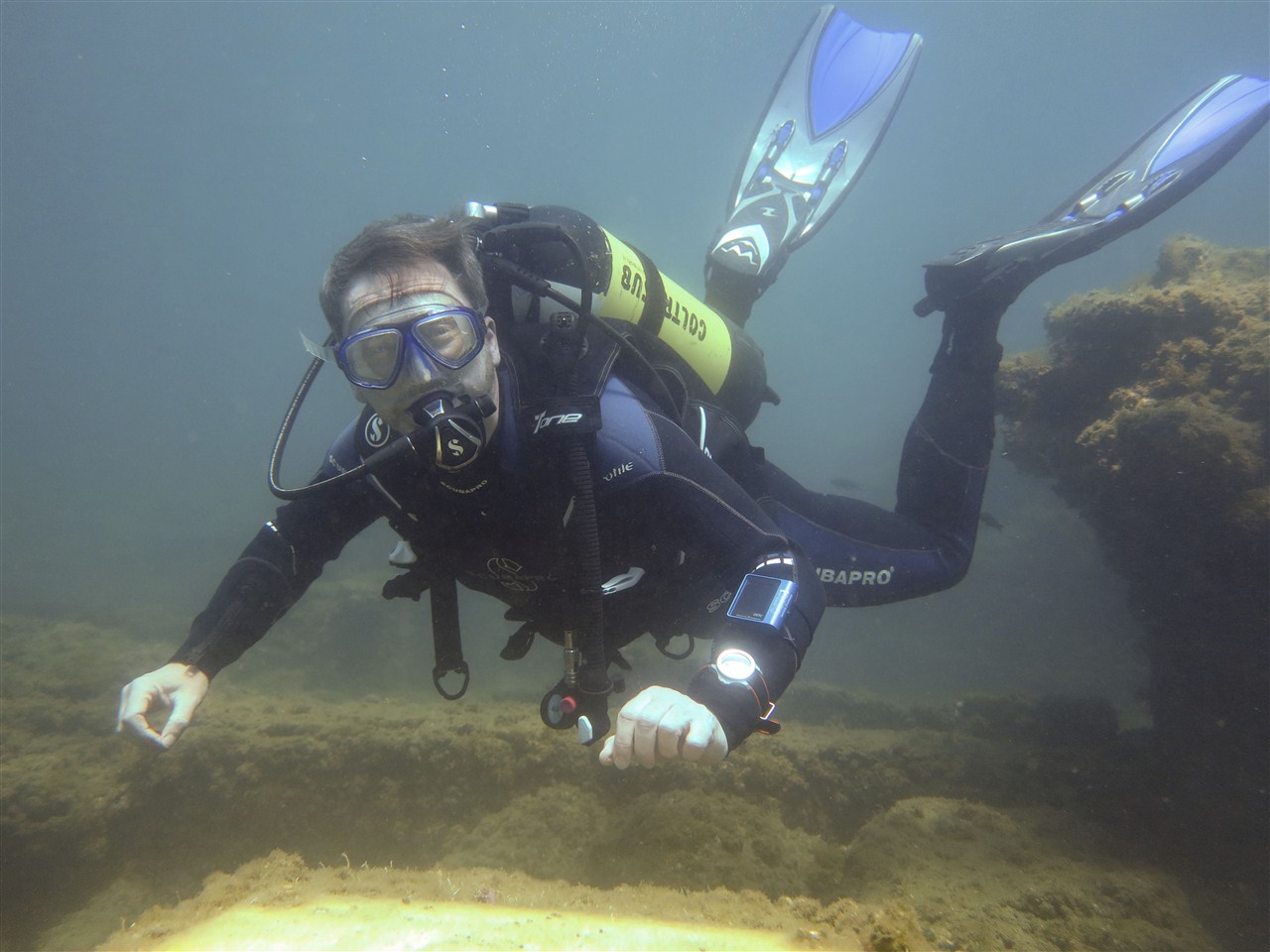
A rare shot of me diving!
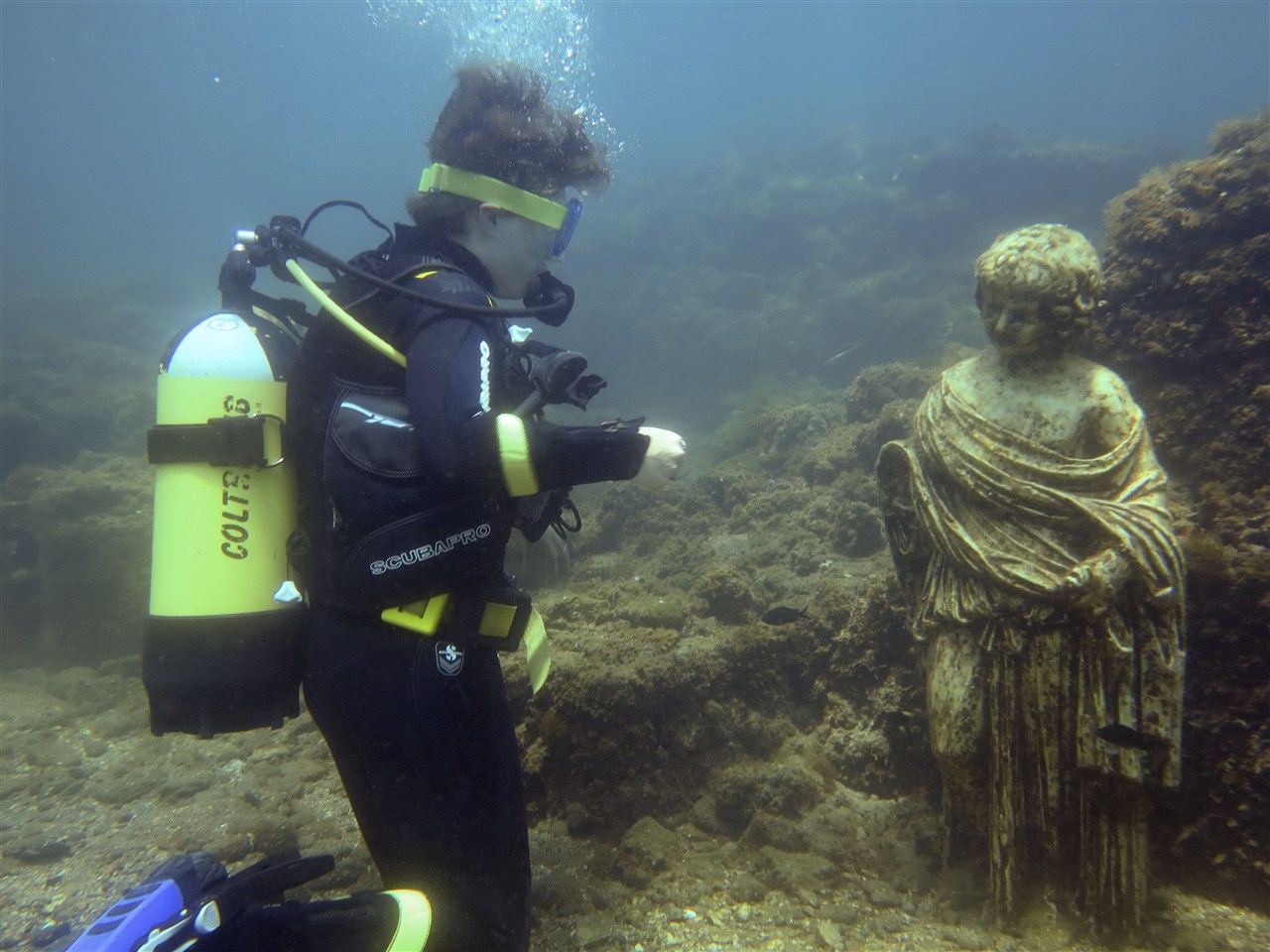
Ann-Sophie comes eye to eye with a Roman god!
I was buddied up with a young woman from Canada, who hadn't dived a lot, but this is pretty easy diving at around 6M, so the only real challenge for us (both) was getting sufficient weight on to sink the quite thick wetsuits we were given.
Once that was resolved (I could have managed, but Ann-Sophie couldn't sink at all initially), we descended to the seabed and started to explore the Nymphaeum of the Emperor Claudius (or the Ninfeo as the Italians call it). This would have originally have been a 'cave' entrance from the sea, leading to a room within the Villa for eating as food was delivered on floating plates around the guests.
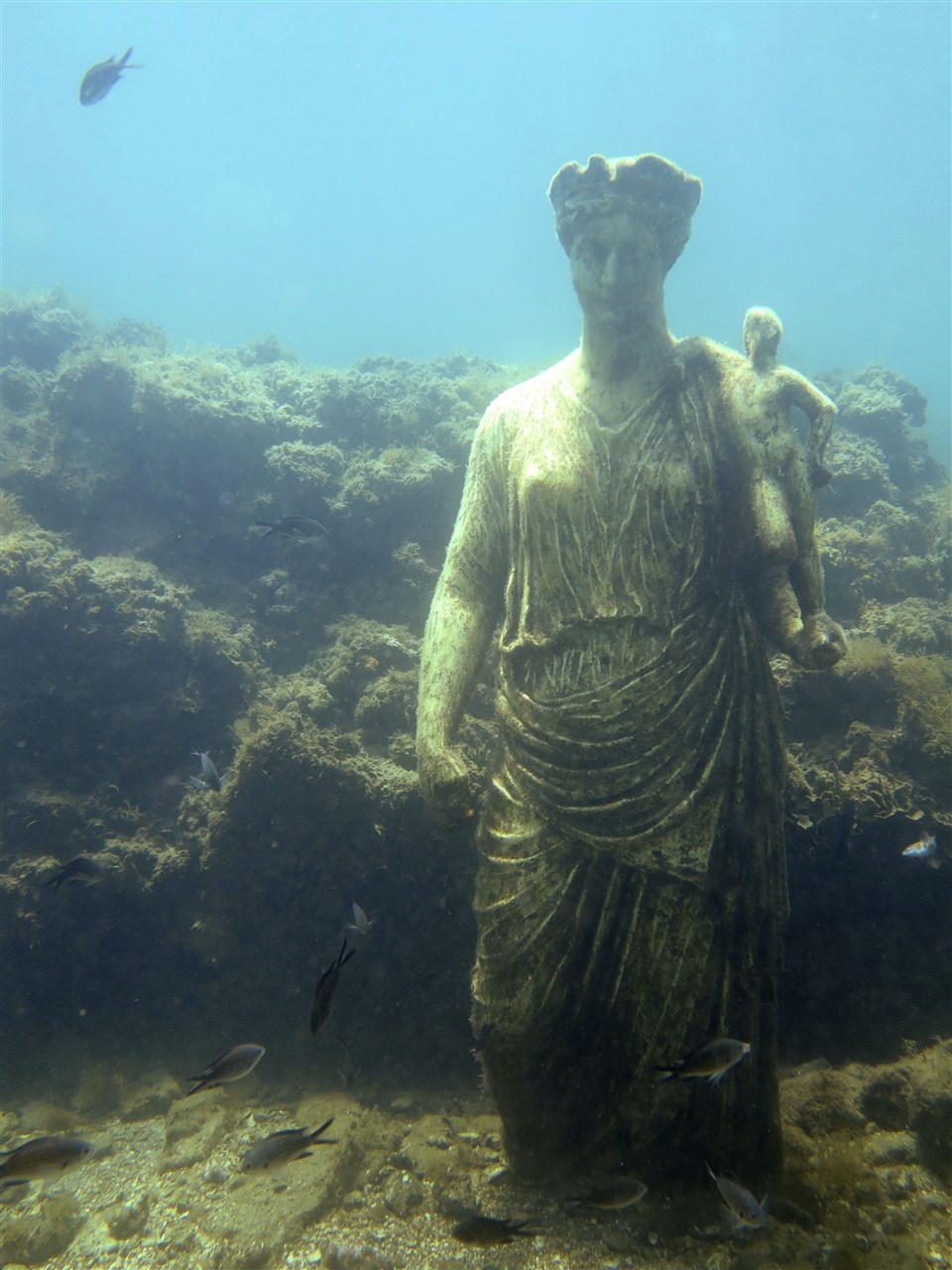
Statues are replicas, but positioned where the originals were found
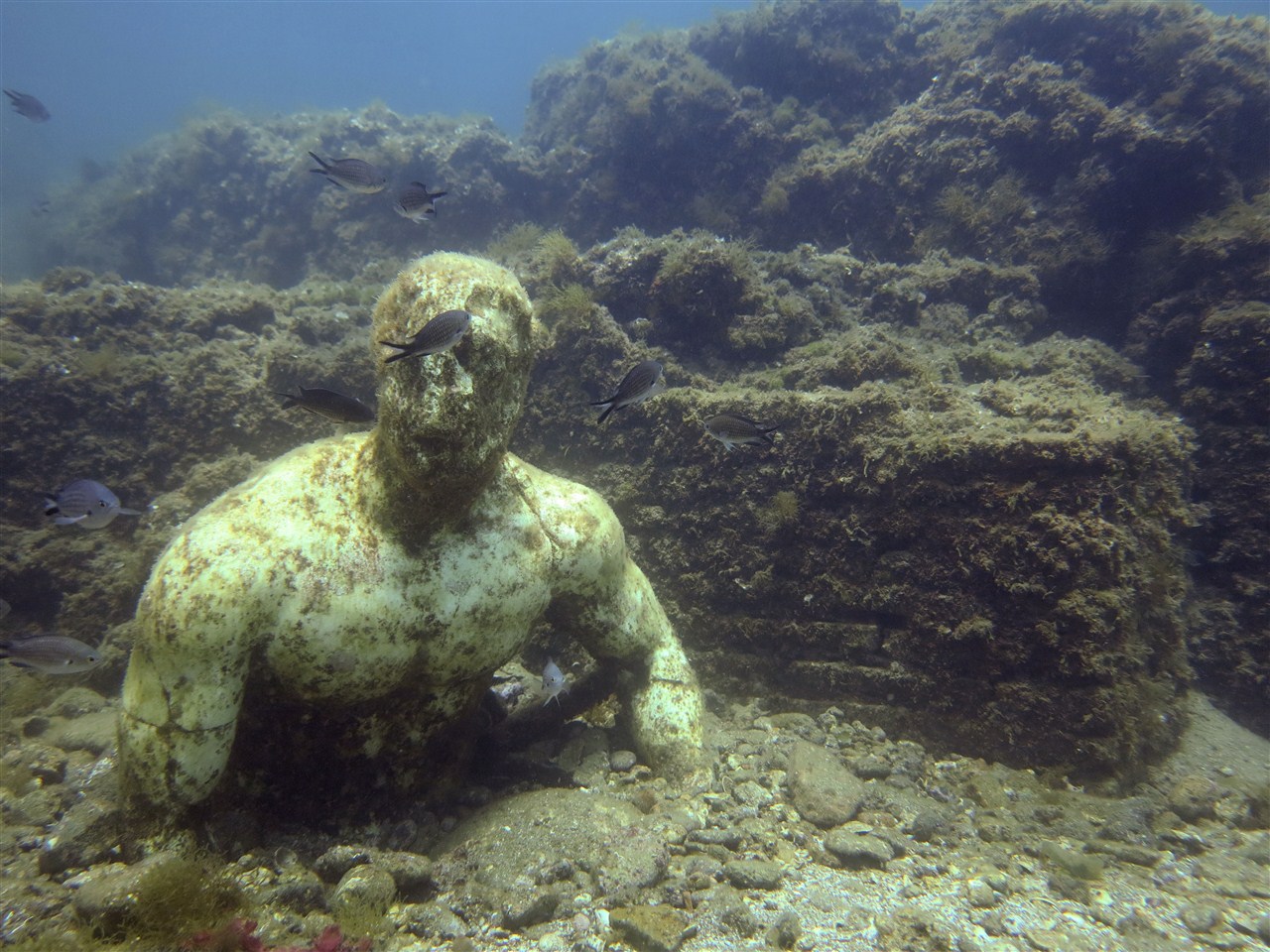
Walls of the Ninfeo are clearly visible
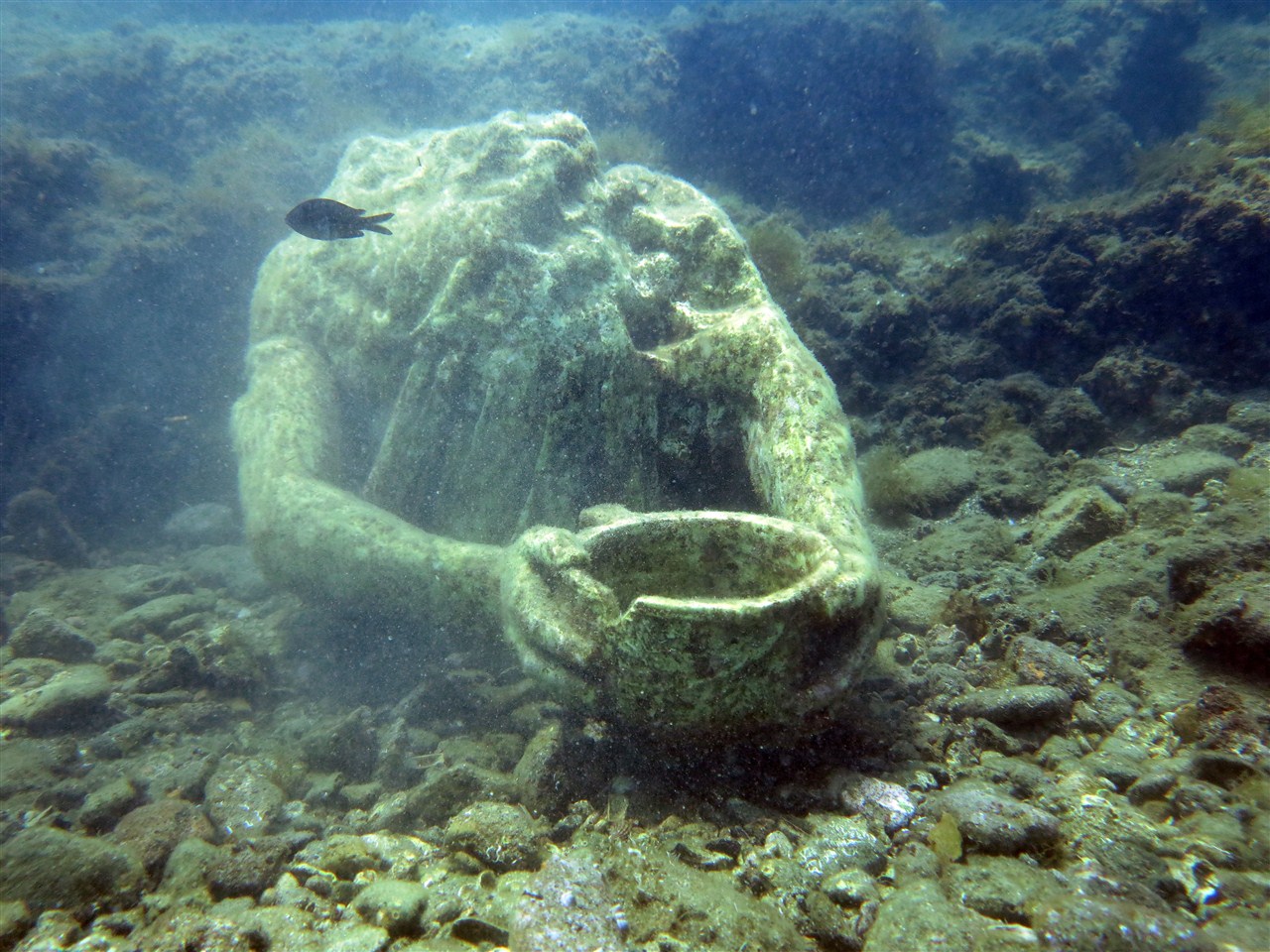
Some of the statue replicas show signs of the damage the originals suffered over centuries without protection
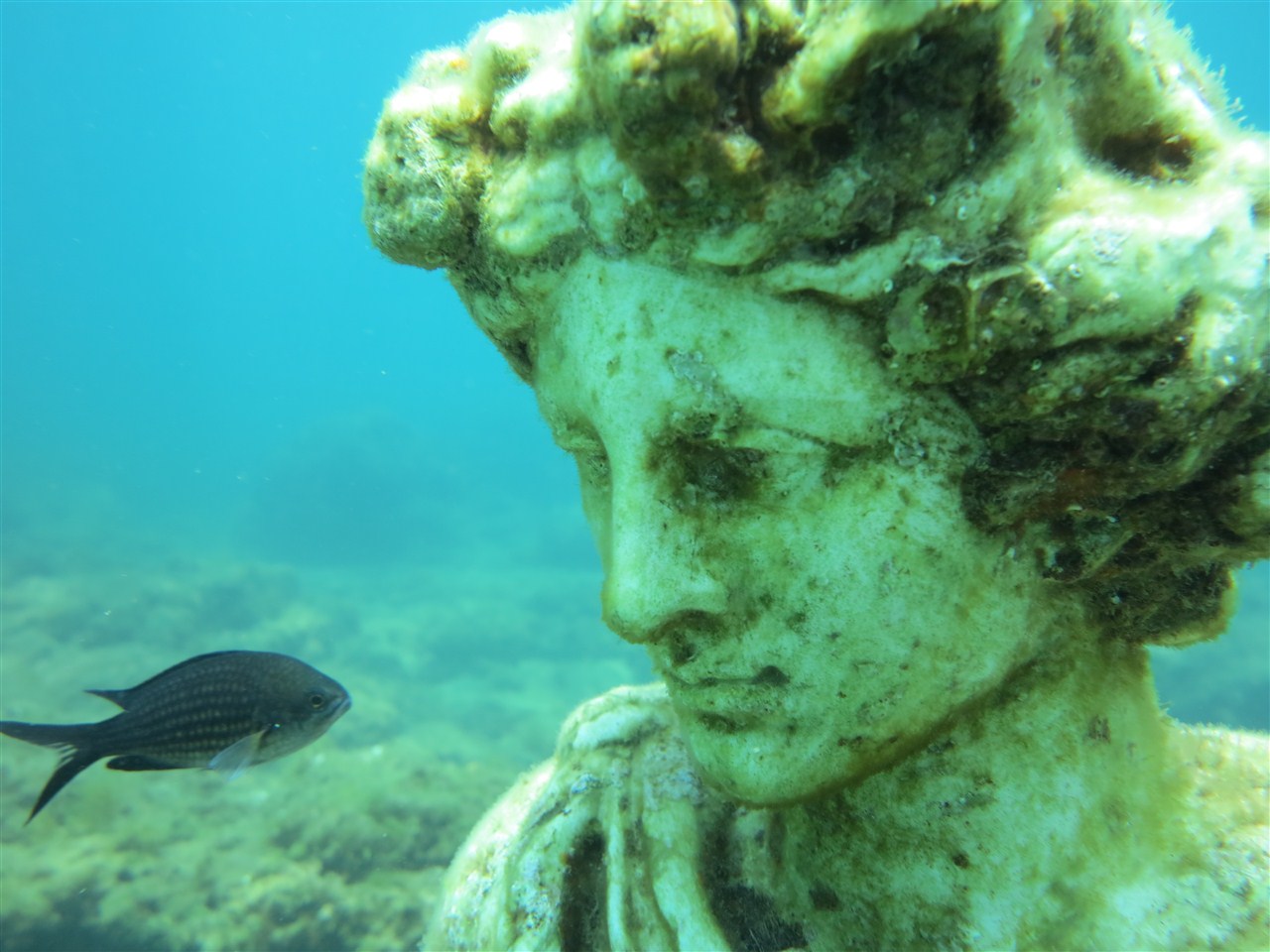
I like this picture - The statue and the fish seem to be saying "What are you?"
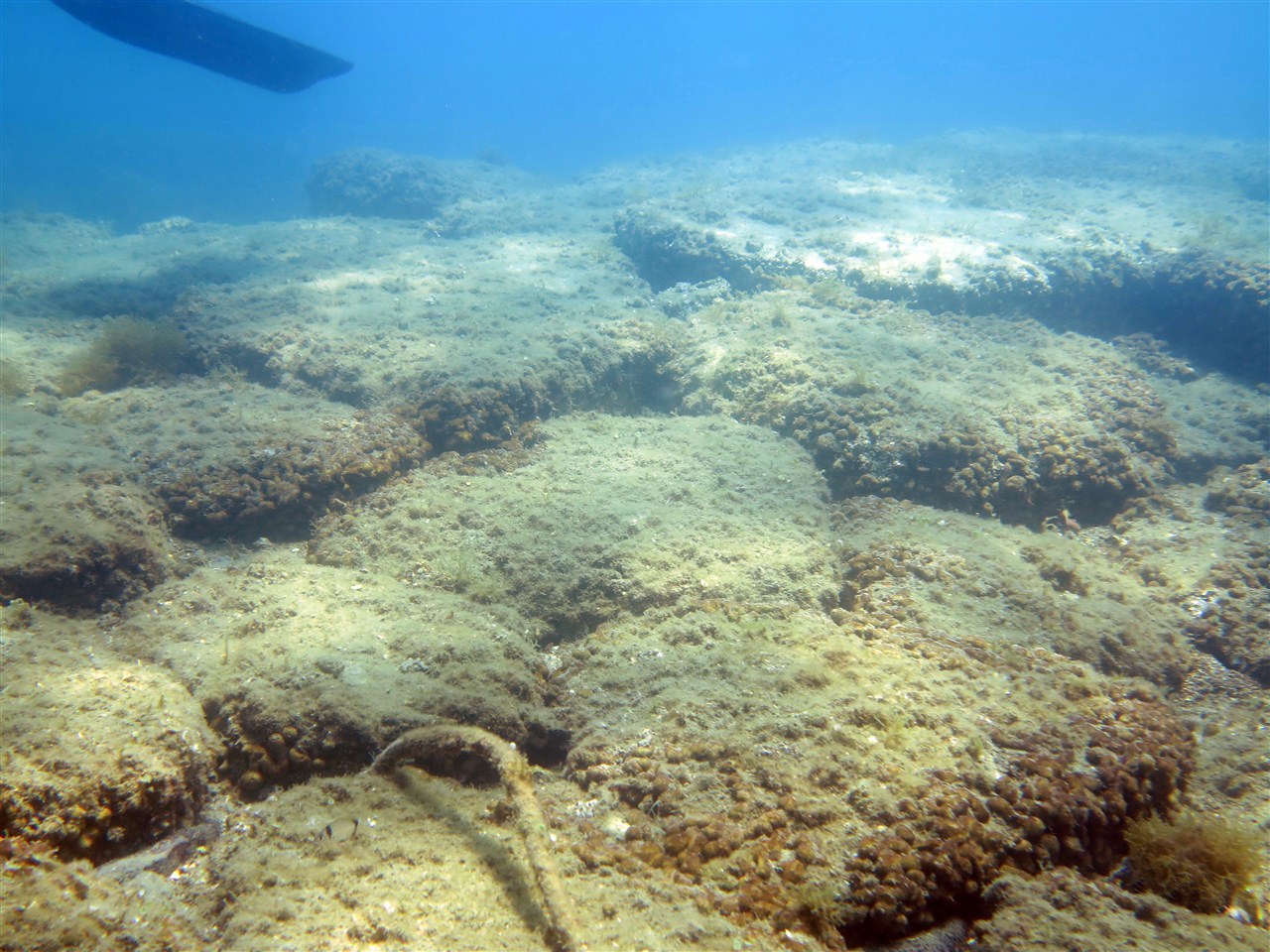
The paving slabs of the Via Julius
Almost immediately we were greeted by the sight of statues arranged around a low wall. These are replicas of the original statues, now preserved in Naples museum, in the locations they occupied, given you a taste of the arrangement of the Nymphaeum and it was reasonably easy to visualise Romans sitting around in the 'cave' indulging in their excess.
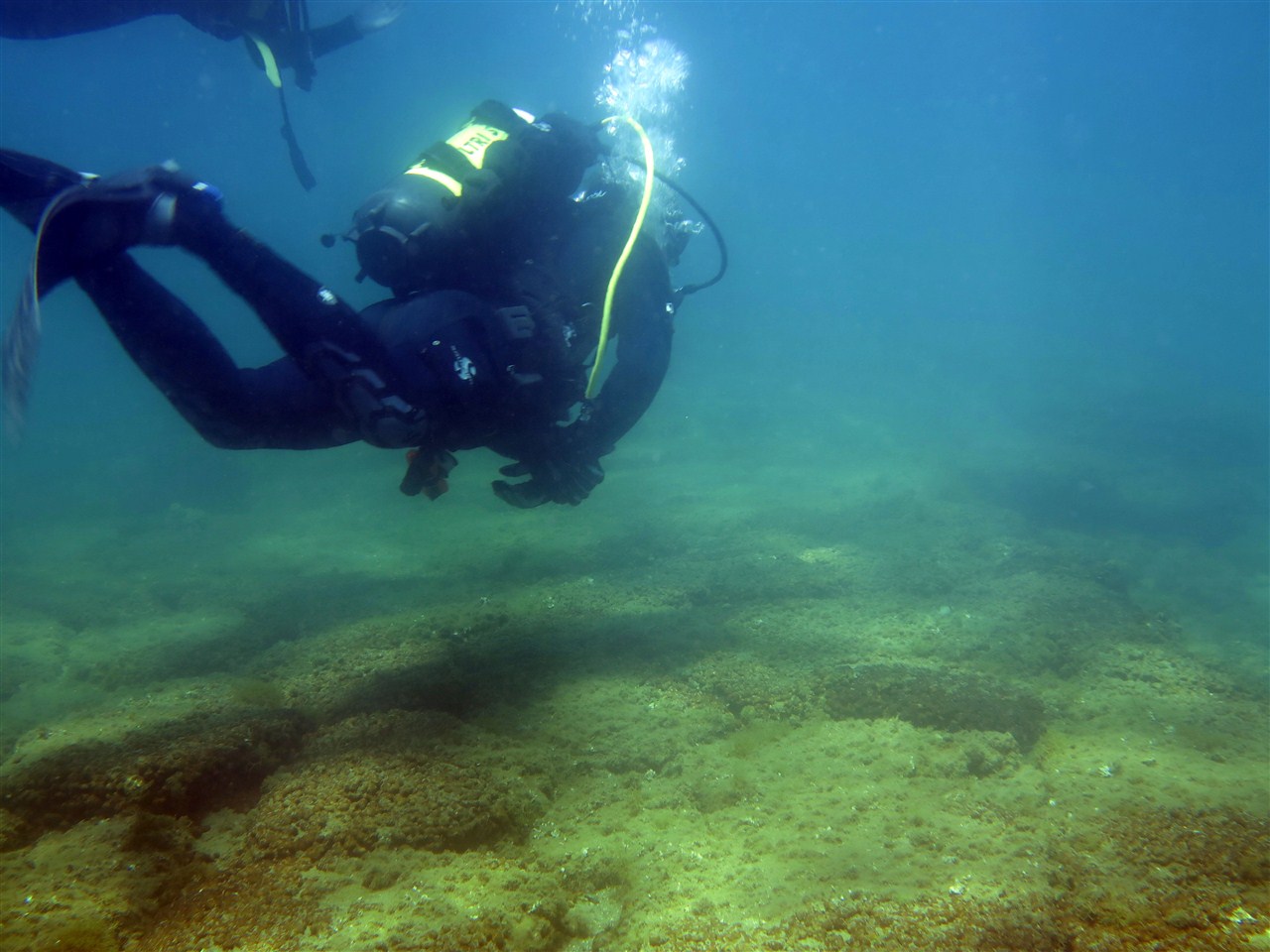
Divers follow the Via Julius towards the port
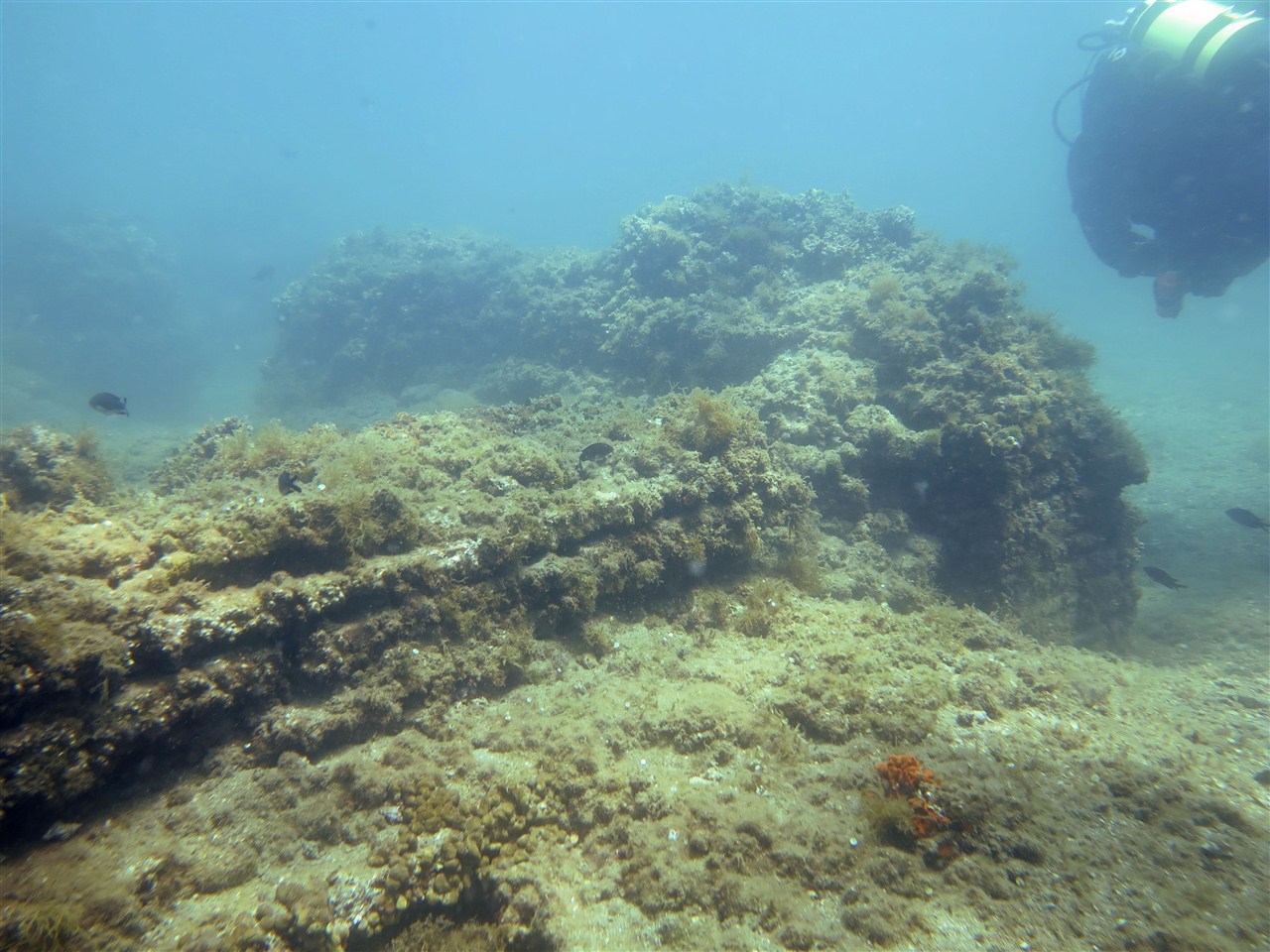
Many buildings to be seen on this dive
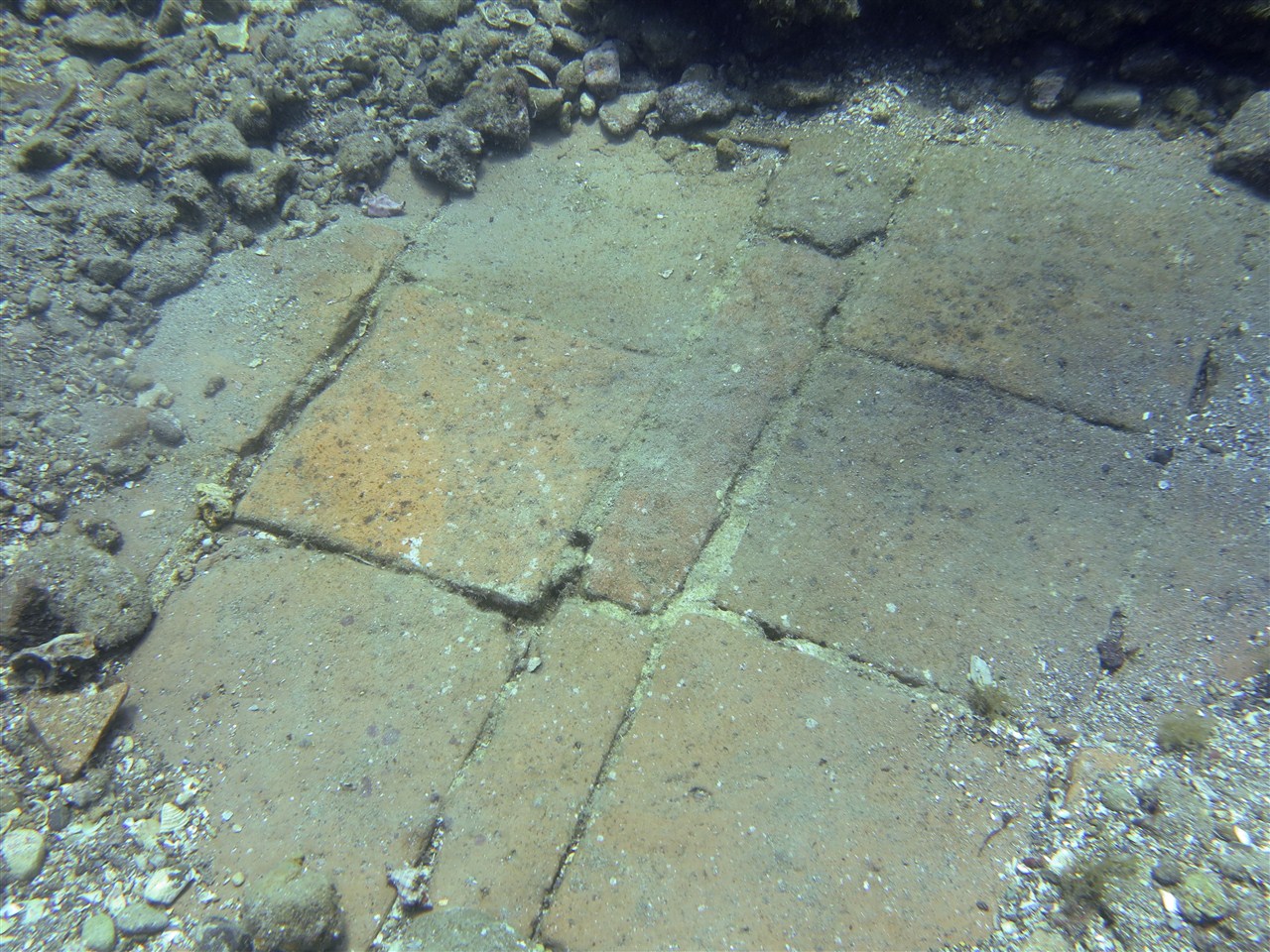
Paving slabs look 100 years old, not 2000!
After a while taking this in, we moved onto other parts of the villa and then out onto the Villa Claudius, the main road, running alongside the villa to the Port in Roman times. This was clearly a major road, with large stone blocks making a clearly defined road 50 yards or more long.
Our route also took in many other buildings of the Emperor's Villa complex, marked clearly by low, but obvious, walls and some remarkable mosaic floors protected by sand, which our guides carefully swept aside to show us the floor beneath.
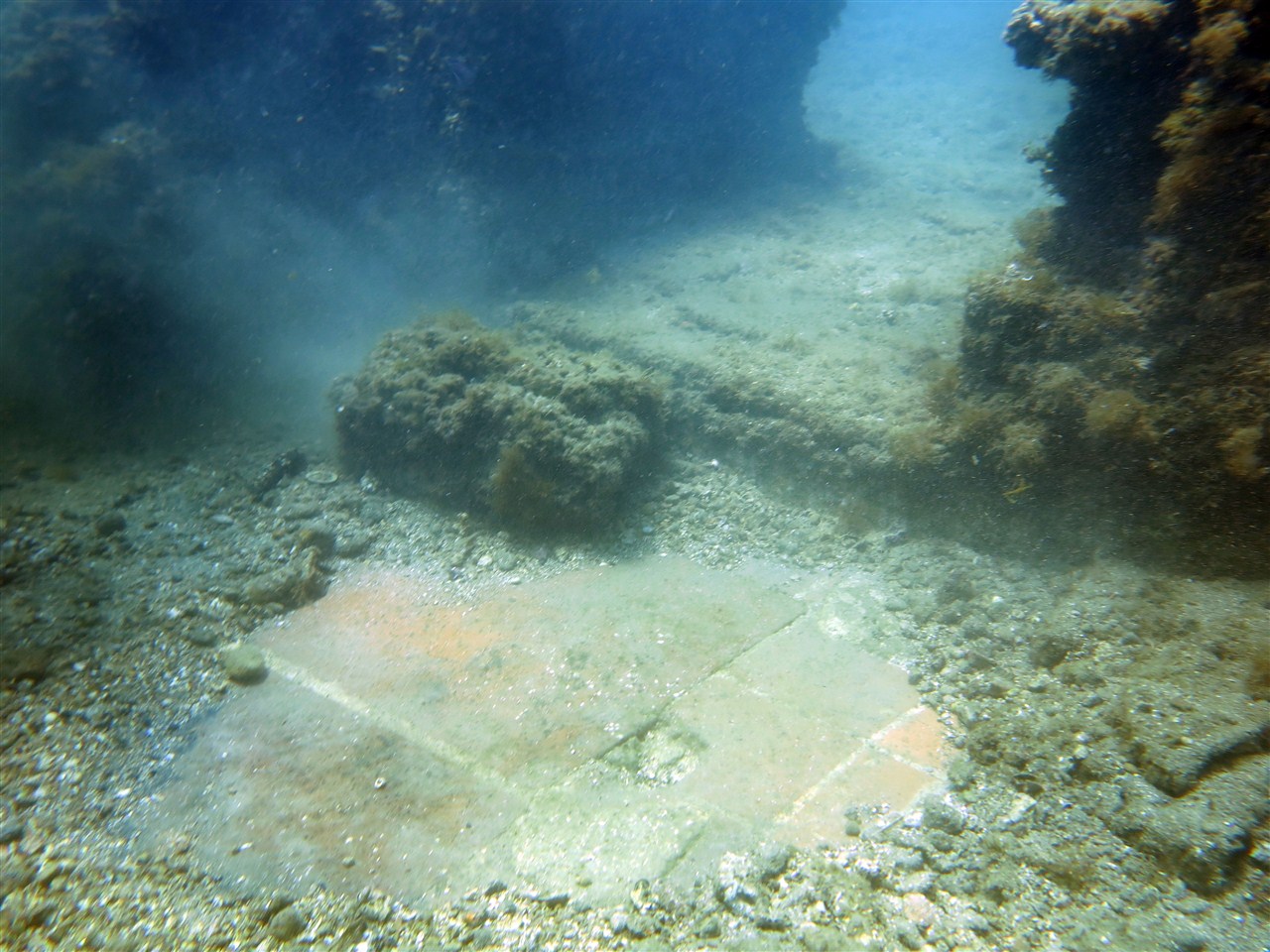
Doorway with more paving
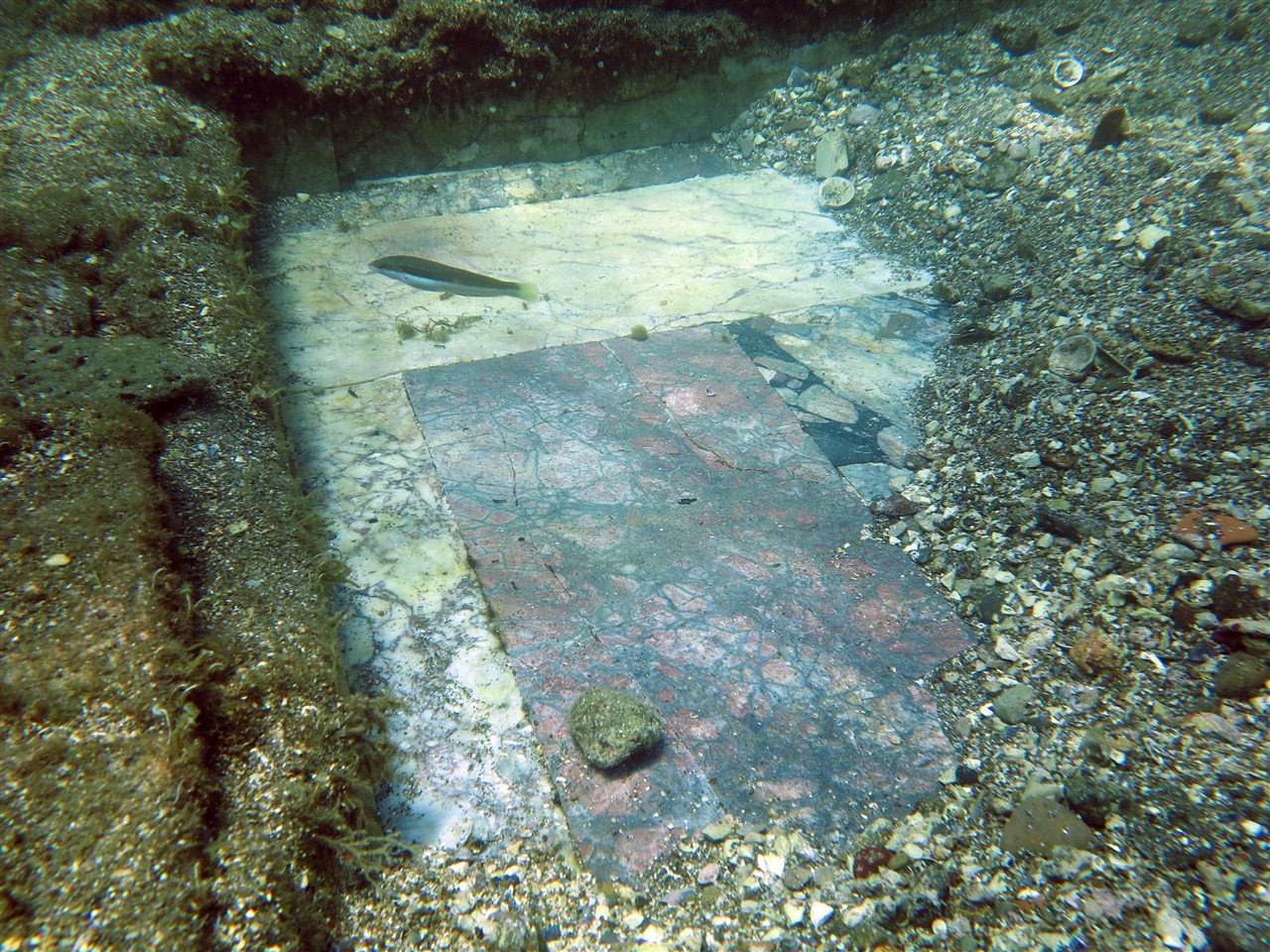
Incredible red Marble is near unique
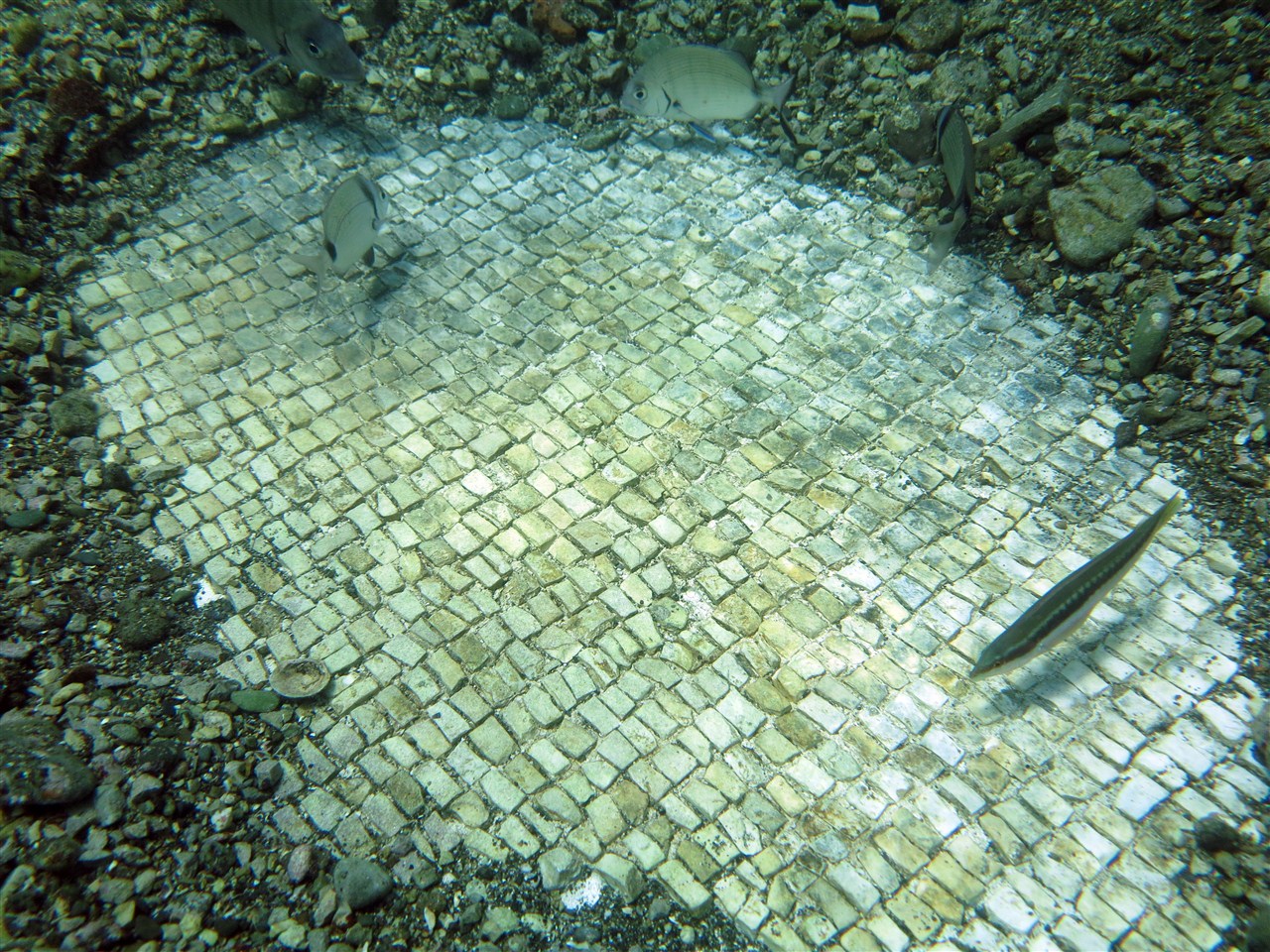
Even on this dive, there are plenty of well preserved mosaic areas, but mostly fairly plain - Guides sweep sand
and stones away to show us and then cover them again for protection before moving on
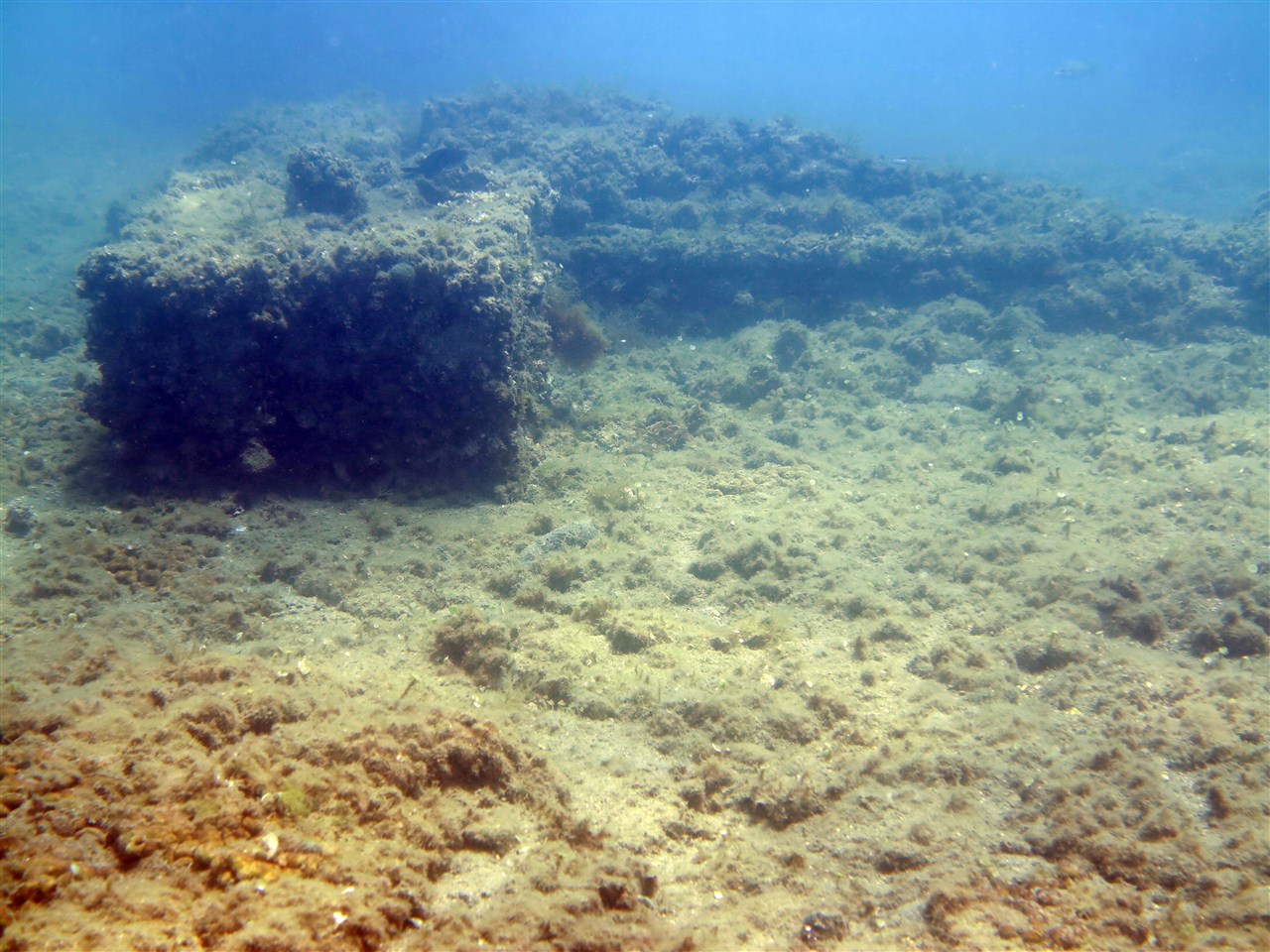
Another entrance in a wall
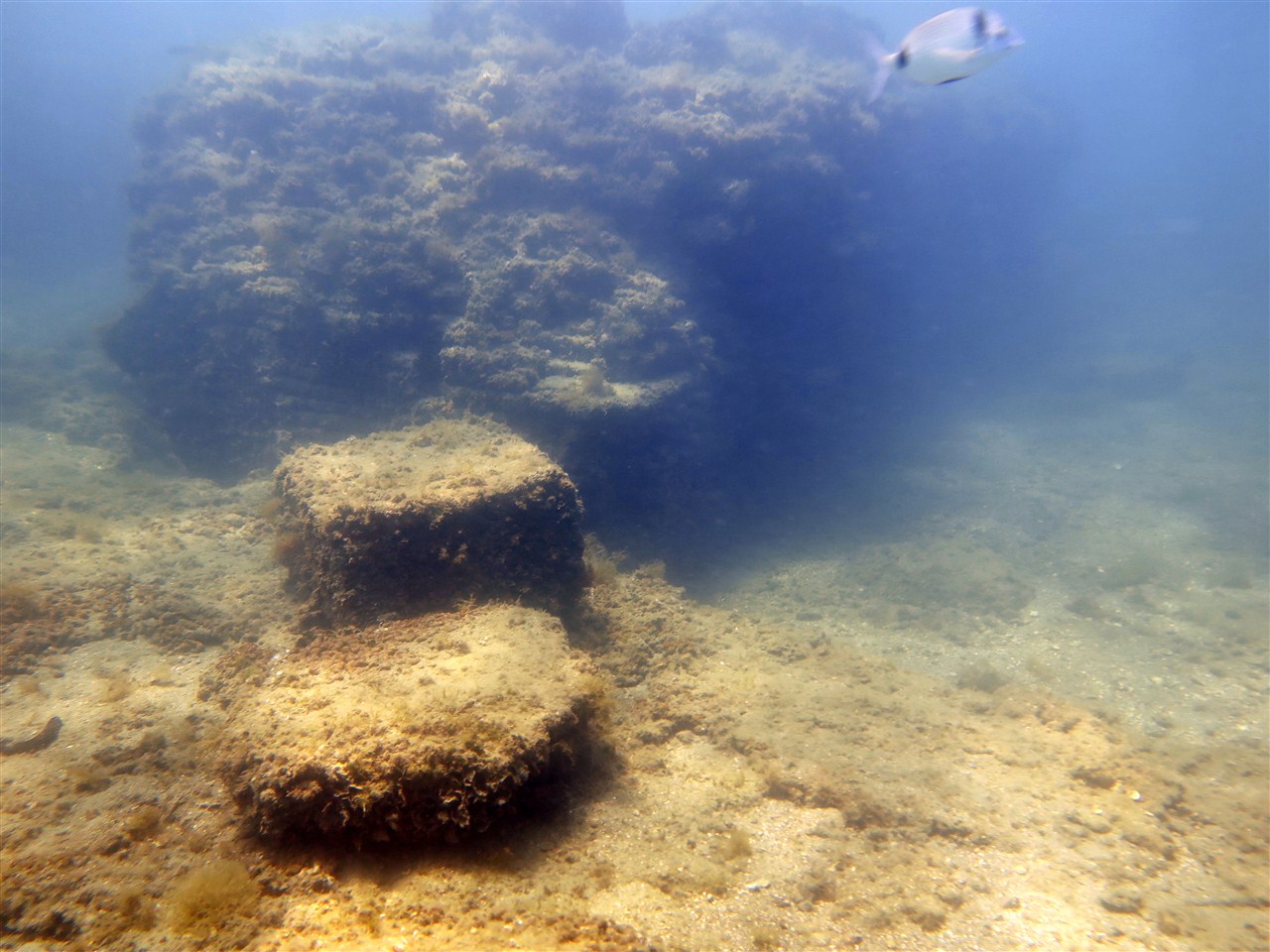
Bases of pillars
At one point, he swept aside sand to reveal pristine marble slabs, some in a vivid red, which were really remarkable and I was told are one of only two pieces of this marble remaining worldwide (one here and another in Sicily, I think).
We surfaced after 40 minutes or so and reboarded the RIB (via a nice little ladder, none of the strenuous hauling yourself in associated with BSAC club RIB diving!) and returned to the Dive Centre for a break (at 6M max, a surface interval is almost redundant).
Mandy commented that the snorkelling had been OK too, being able to see the mosaics and marble cleared for us by our guides from the surface, before it was carefully covered.
After 90 minutes or so a family from Slovenia (who'd also dived on the first dive, along with a Neapolitan) and I headed out on the boat to dive the Portus Julius.
This was an even less strenuous dive, with maximum depth only 2.4M! In a way it's a challenge to dive without either bobbing just below the surface or bouncing along the bottom, but everyone did a good job and we enjoyed swimming around the buildings of the ancient Port, spotting uncountable shards of pottery, walls, staircases and even a few small columns (some were expecting Acropolis height columns and a little disappointed, but they were the highlight of this dive, for me - I mean, 2,000 year old columns sitting there under the sea for me to explore!).
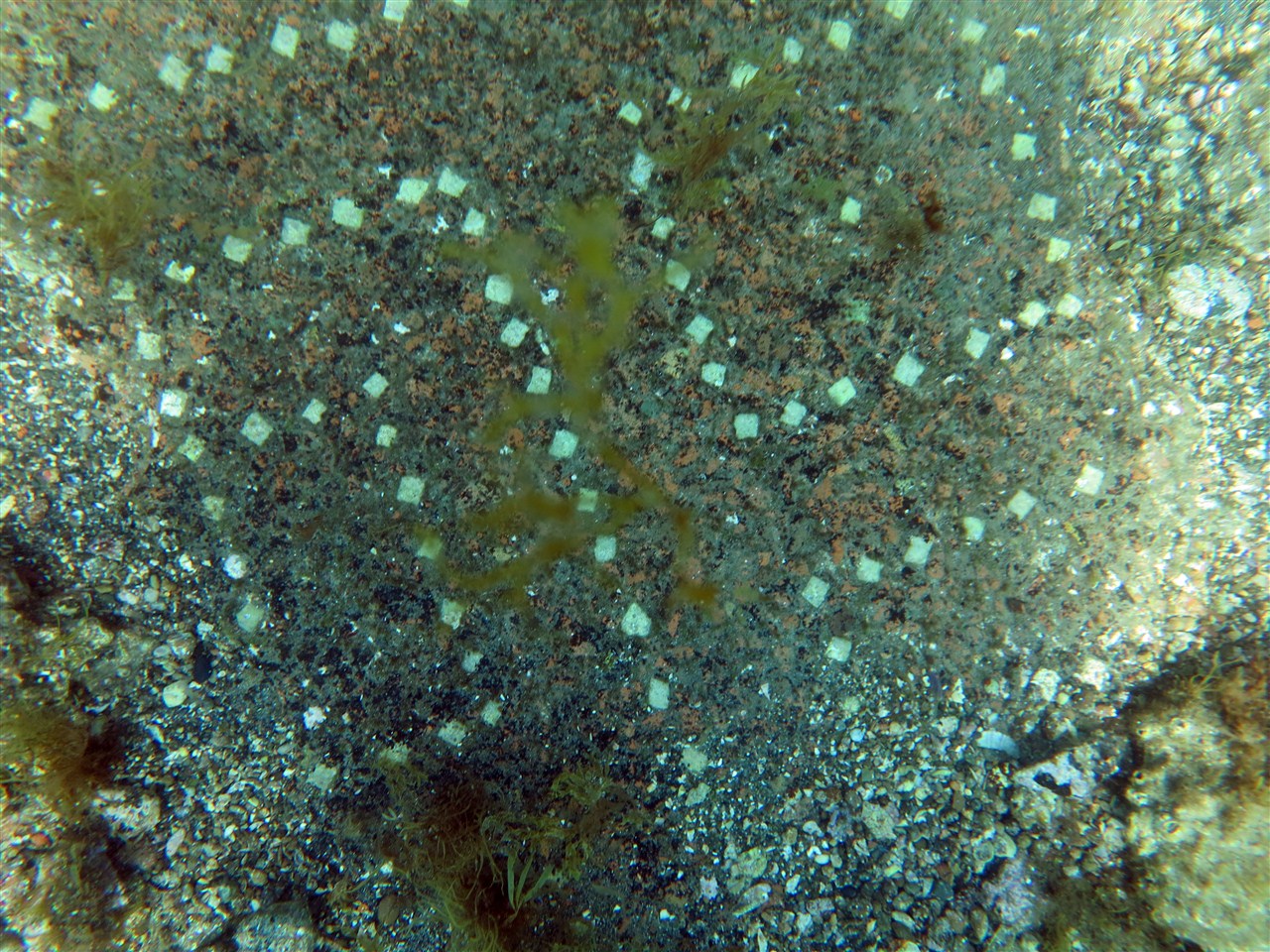
Detailed Mosaic - White dots inlaid into reddish stone
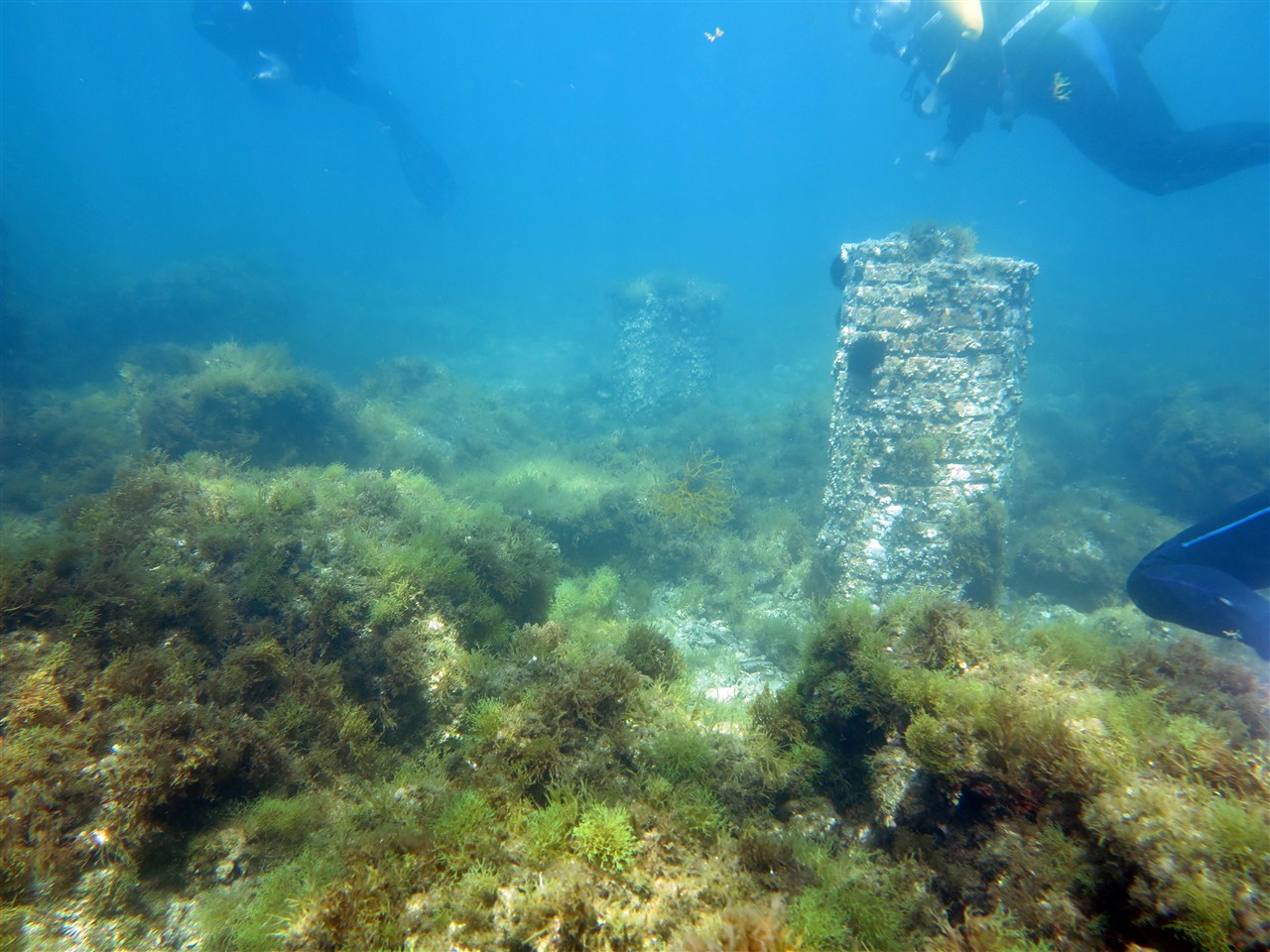
Stone Pillars in the Portus Julius
To be honest, this dive was 'interesting' rather than marvelous and I am a bit disappointed not to have combined the first dive with one on the ruins of Protiro Villa (as these divers did), with the now iconic black and white mosaics, but it gives me a reason to return some day, to combine that dive with a visit to the land based ruins of Baia and a longer exploration of Pompeii, now our interest is re-piqued by our trip to Naples.
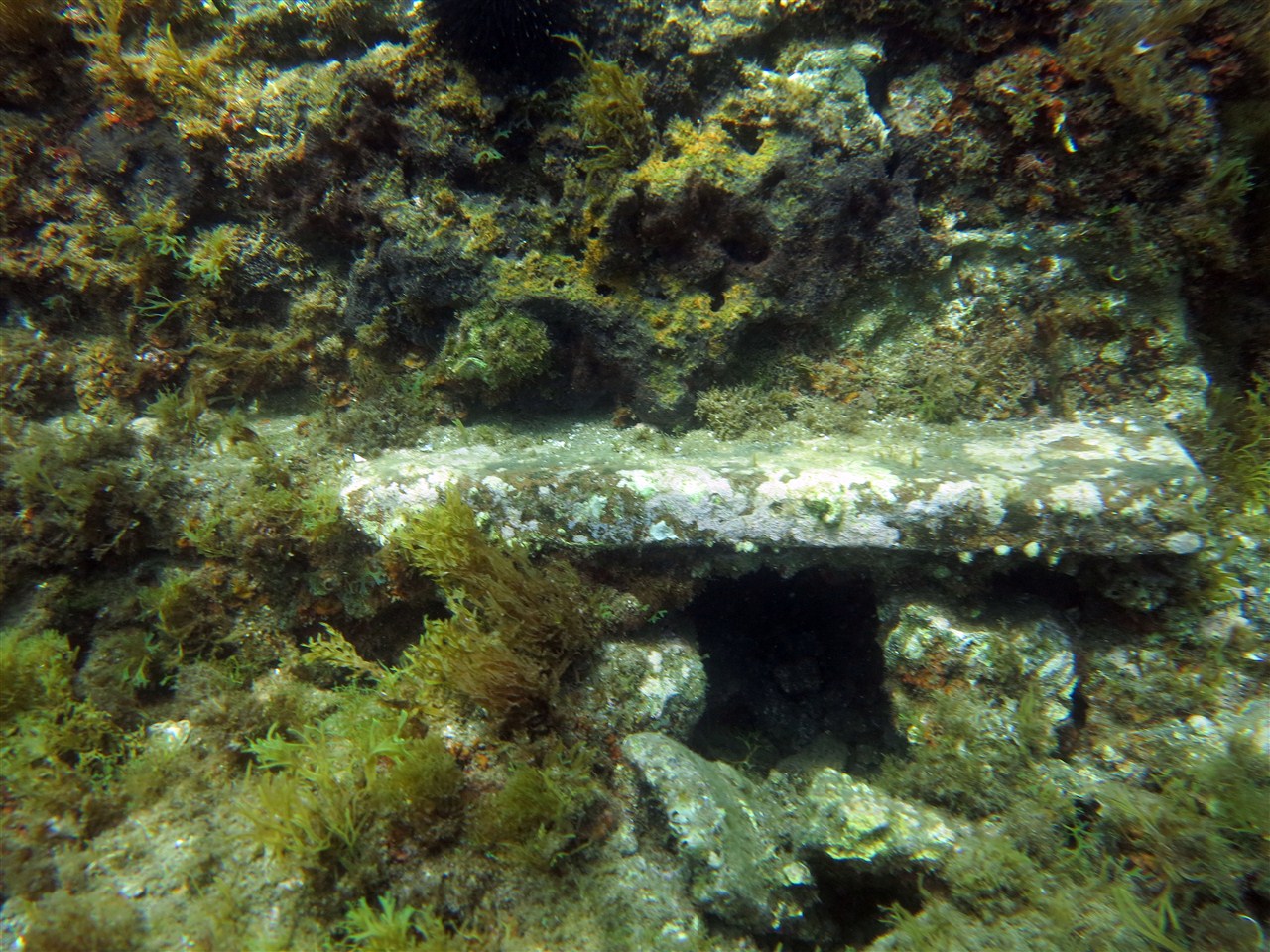
Shop(?) shelf in one building
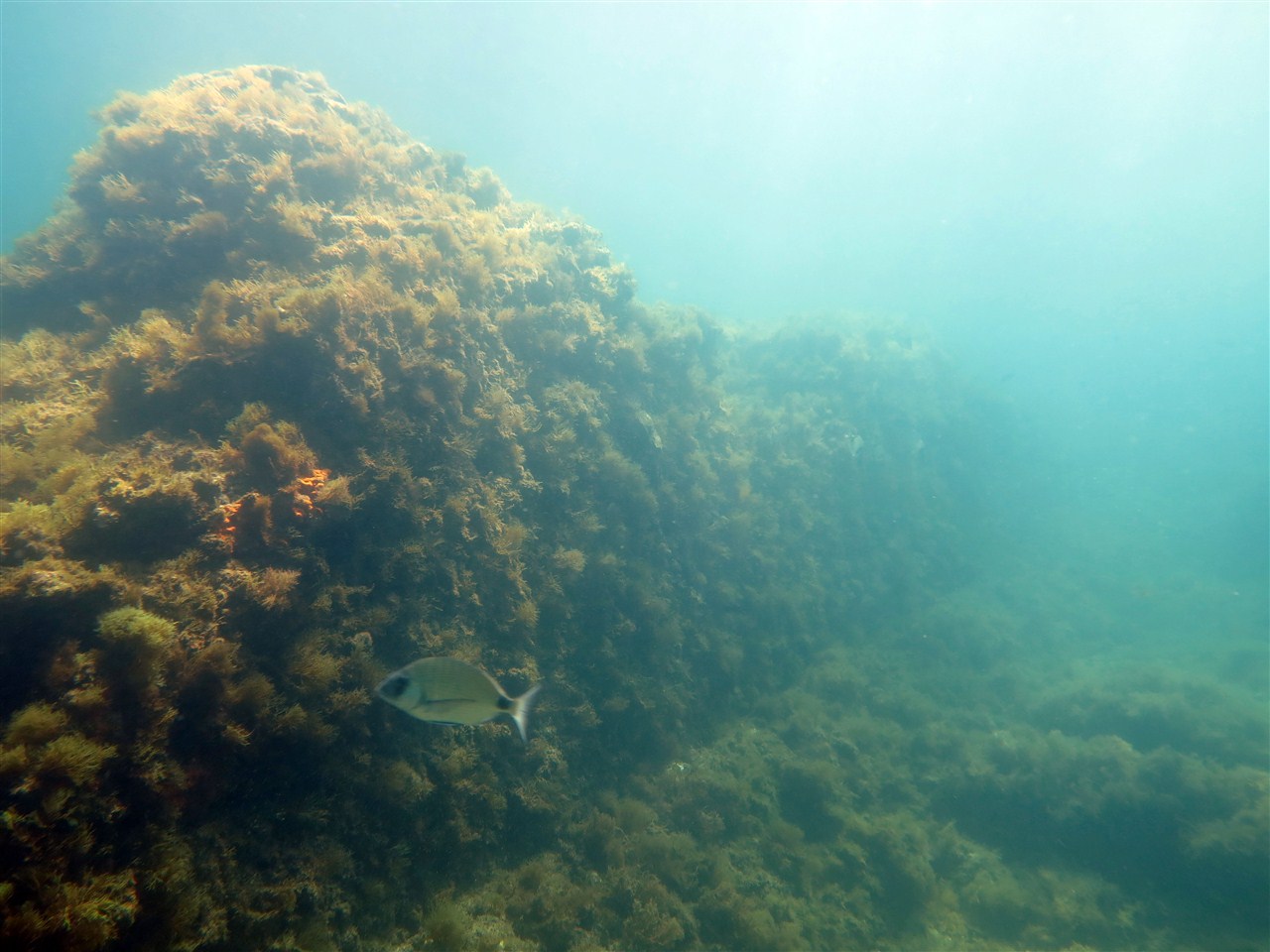
Start of a long stretch of wall in the Port
There weren't many fish around, there never are in the Med, but we saw a few, especially in the Nymphaeum, where the status seem to intrigue the fish. The fact this area is now off limits to fishermen probably helps too!
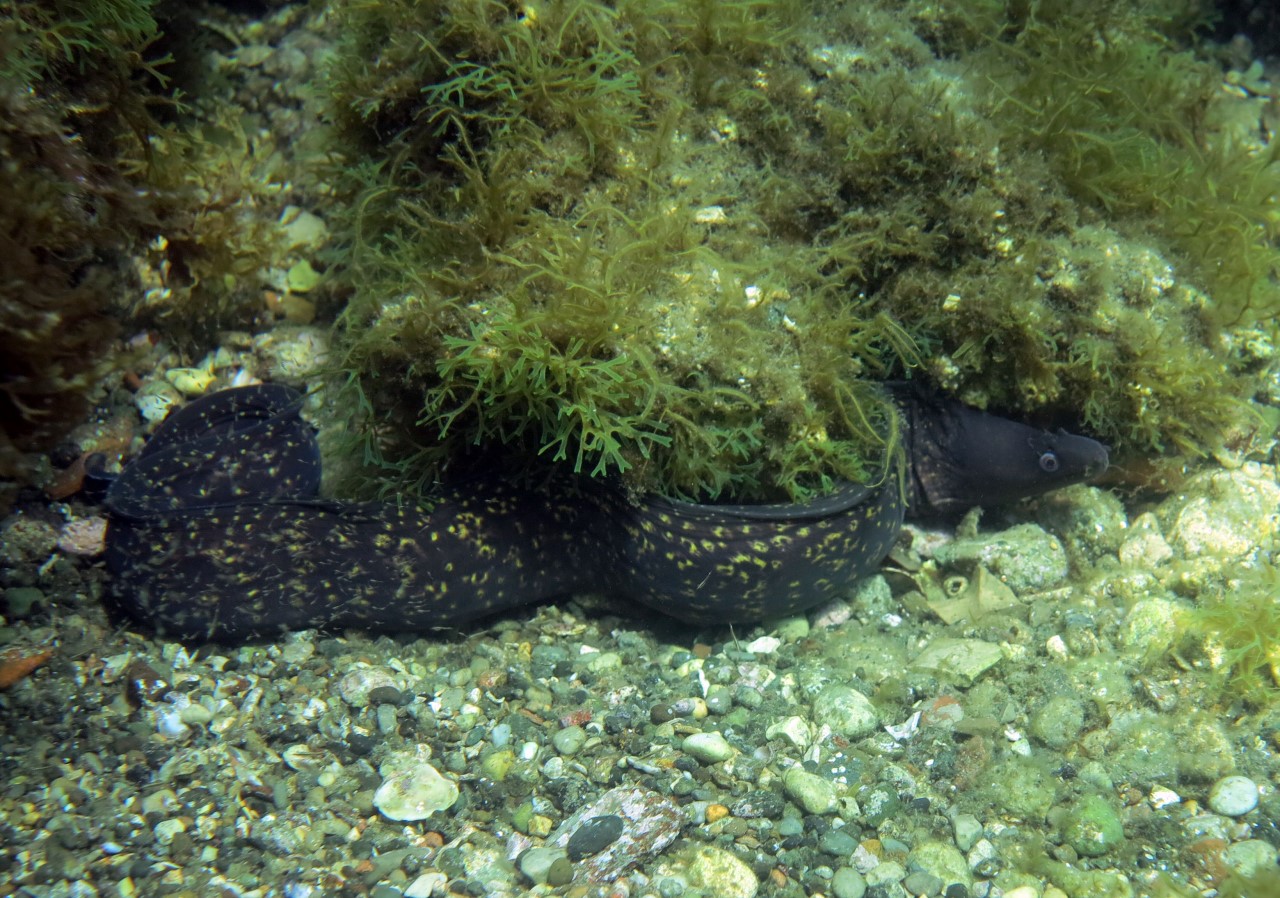
Eel
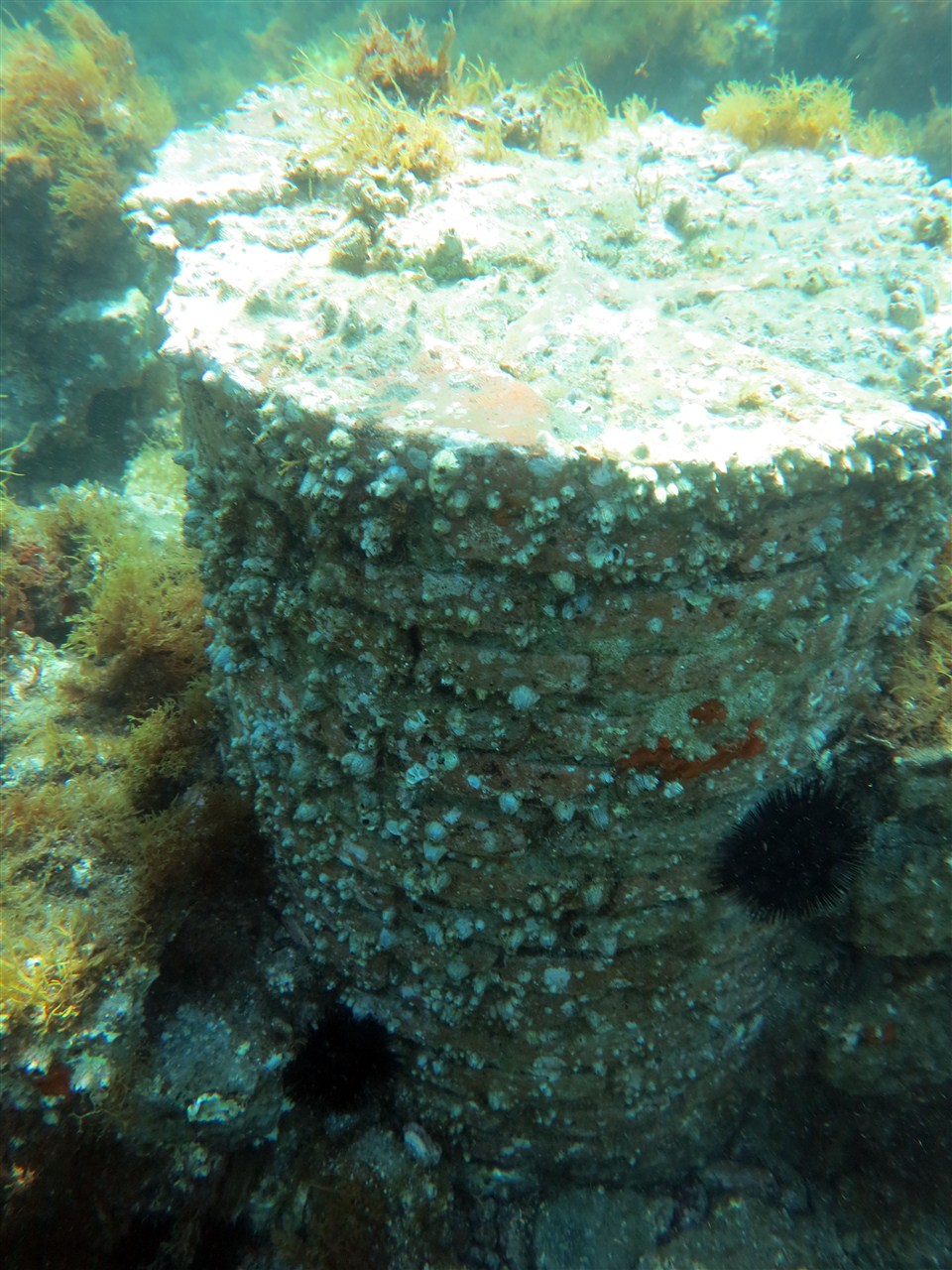
One of the stone Pillars
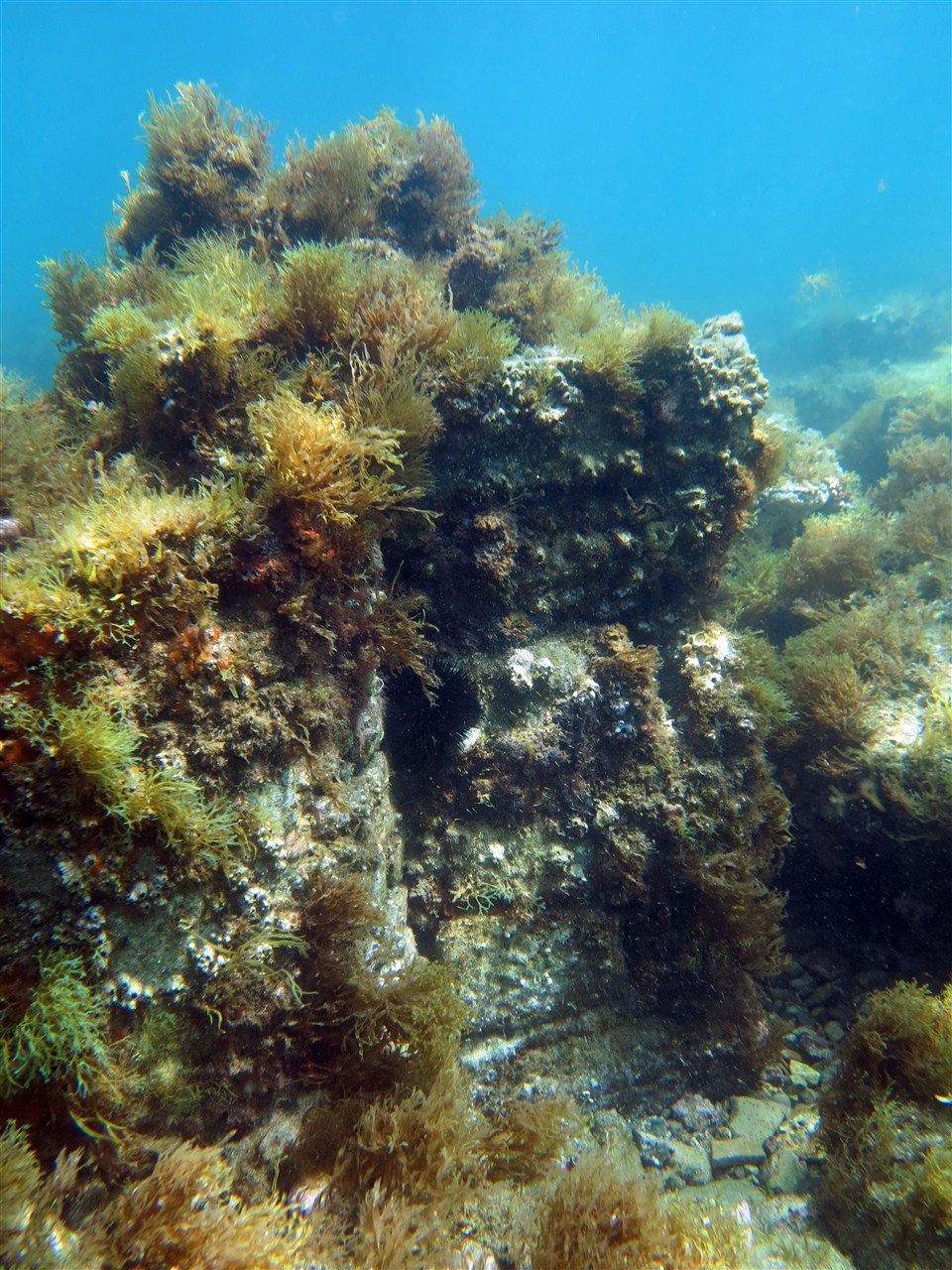
Another part of the walls in the Port
It's very tame diving and you need to be realistic about what you will see (it won't be Rome beneath the waves!), but if you go with the right expectations, a dive on the Roman ruins of Baia is a near unique, and very enjoyable, experience for divers of even modest experience and one that the non-divers in your family can join in with!
Read some more of my diving experiences, by clicking the icons below.


